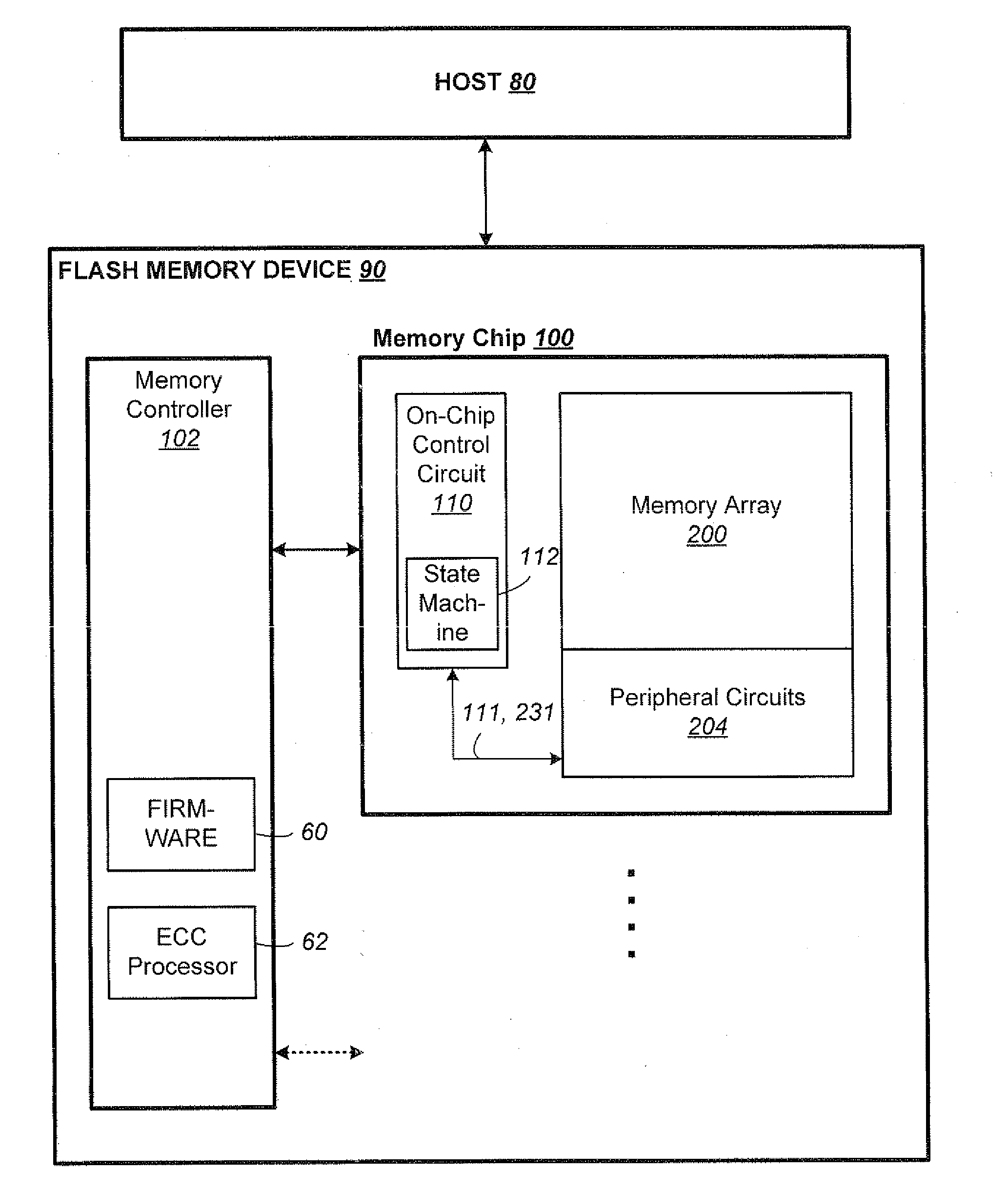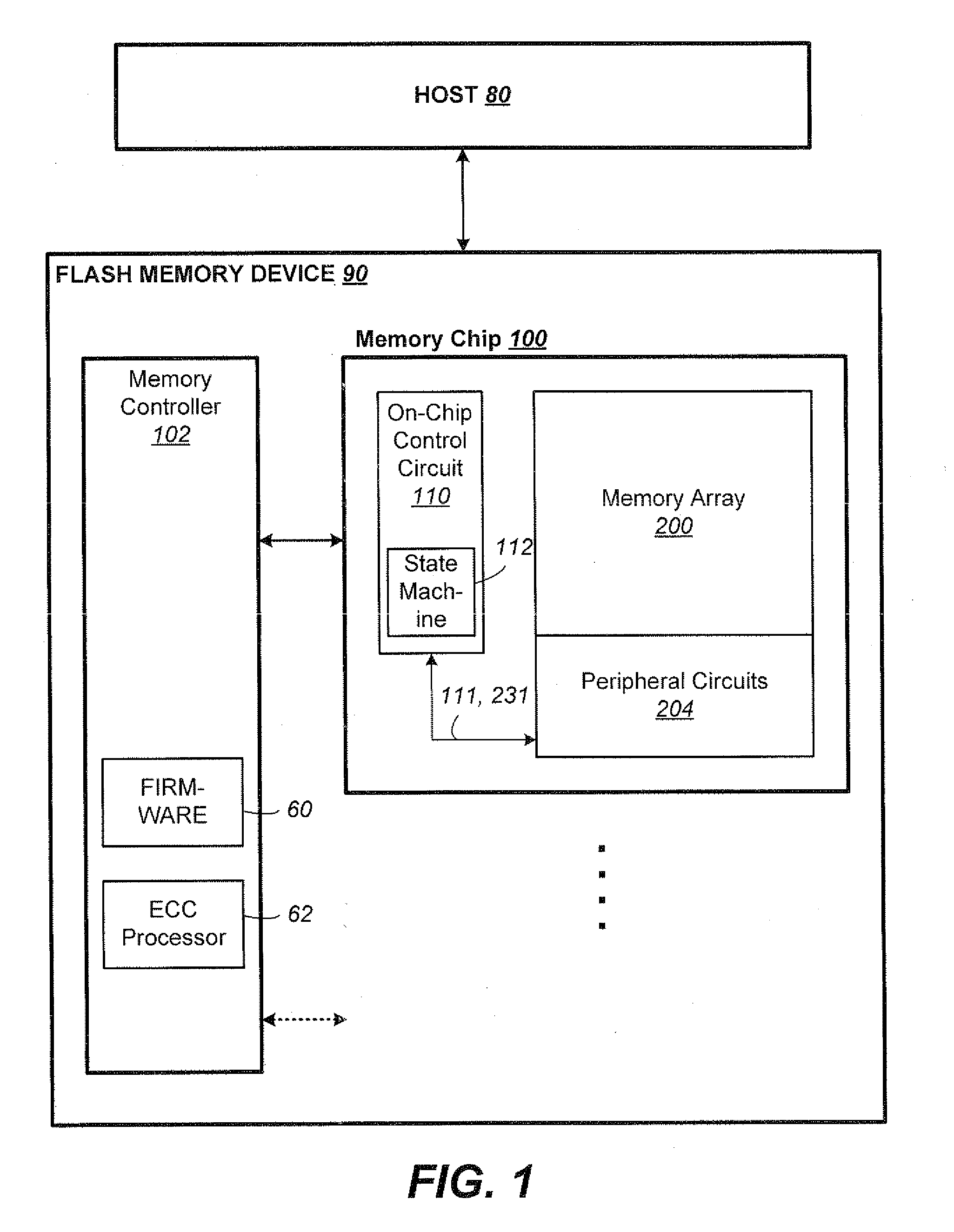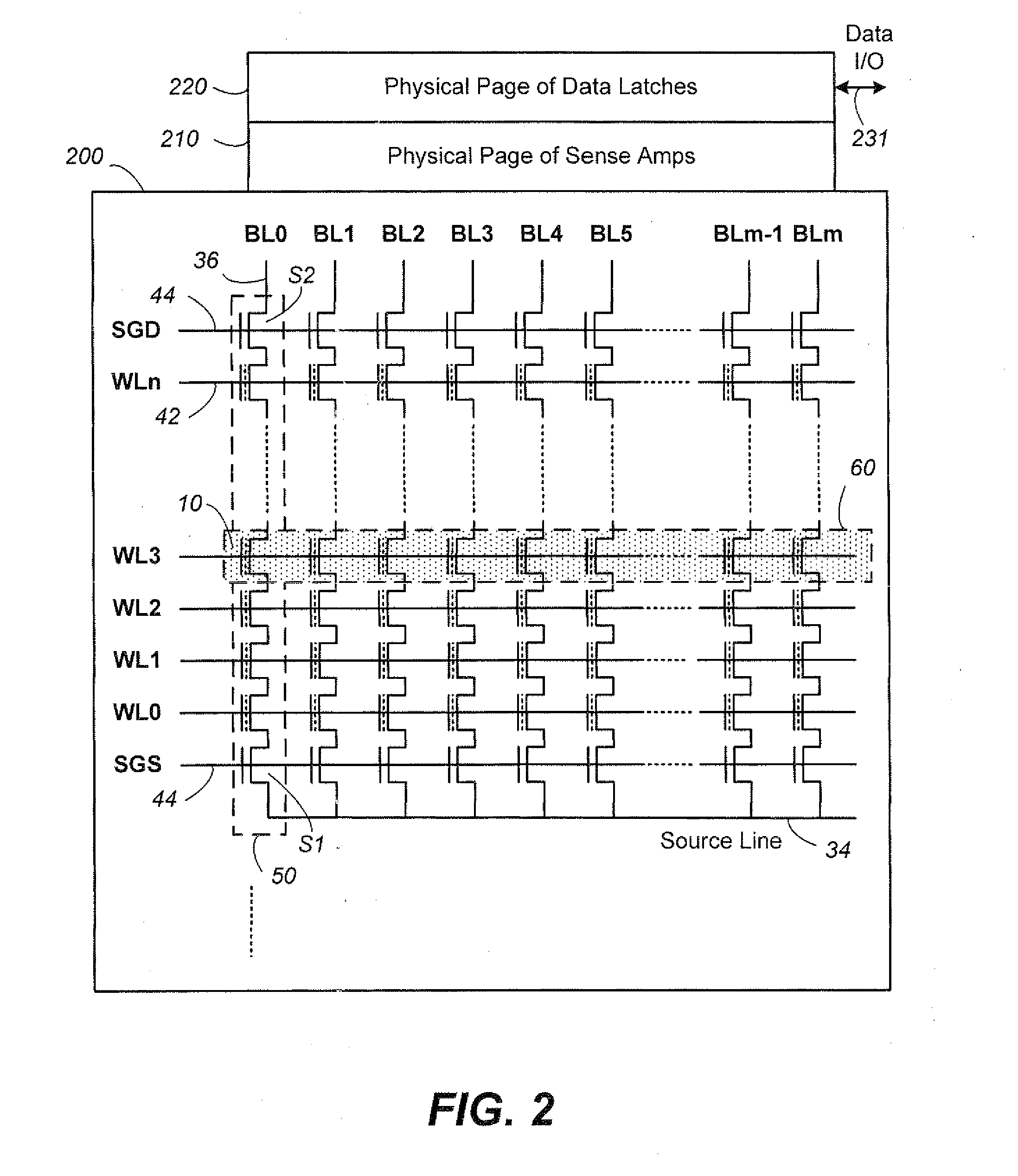Non-Volatile Memory and Method Having Block Management with Hot/Cold Data Sorting
a non-volatile memory and data sorting technology, applied in the direction of memory adressing/allocation/relocation, instruments, computing, etc., can solve the problems of unsuitable mobile and handheld environment, bulky disk drives, and easy mechanical failure, so as to achieve the effect of reducing rewrites
- Summary
- Abstract
- Description
- Claims
- Application Information
AI Technical Summary
Benefits of technology
Problems solved by technology
Method used
Image
Examples
Embodiment Construction
Memory System
[0055]FIG. 1 illustrates a host in communication with a memory device in which the features of the present invention are embodied. The host 80 typically sends data to be stored at the memory device 90 or retrieves data by reading the memory device 90. The memory device 90 includes one or more memory chip 100 managed by a memory controller 102. The memory chip 100 includes a memory array 200 of memory cells with each cell capable of being configured as a multi-level cell (“MLC”) for storing multiple bits of data, as well as capable of being configured as a single-level cell (“SLC”) for storing 1 bit of data. The memory chip also includes peripheral circuits 204 such as row and column decoders, sense modules, data latches and I / O circuits. An on-chip control circuitry 110 controls low-level memory operations of each chip. The control circuitry 110 is an on-chip controller that cooperates with the peripheral circuits to perform memory operations on the memory array 200. Th...
PUM
 Login to View More
Login to View More Abstract
Description
Claims
Application Information
 Login to View More
Login to View More - R&D
- Intellectual Property
- Life Sciences
- Materials
- Tech Scout
- Unparalleled Data Quality
- Higher Quality Content
- 60% Fewer Hallucinations
Browse by: Latest US Patents, China's latest patents, Technical Efficacy Thesaurus, Application Domain, Technology Topic, Popular Technical Reports.
© 2025 PatSnap. All rights reserved.Legal|Privacy policy|Modern Slavery Act Transparency Statement|Sitemap|About US| Contact US: help@patsnap.com



